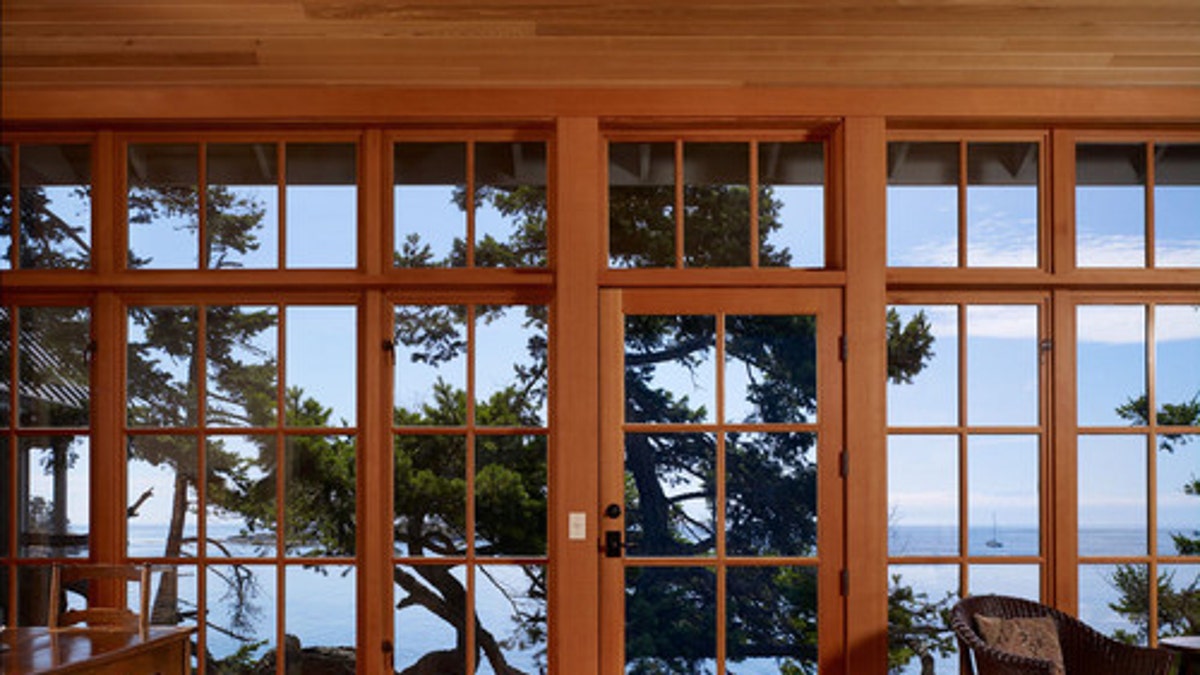
(Houzz/Sullivan Conard Architects)
Windows are the charmer of a house. They add that last touch of character that completes the house's style, especially if they're older windows.
But if your windows are a little gray around the edges, and it's impossible to update them for efficiency, then it's time to choose new windows. And because you're already replacing them, you might as well choose energy-efficient ones that will save you money.
The first step is deciphering all the acronyms regarding energy-efficient windows. The second step is understanding all the parts of a window -- frame, glazing and operation -- and how they contribute to a window's efficiency.
Window Frames
A window's frame can be made out of aluminum or another metal, composite, fiberglass, vinyl or wood.
All have their advantages and disadvantages, but the U.S. Department of Energy (DOE) recommends vinyl, wood, fiberglass or composite. (Aluminum is easily heated, so it isn't a great insulator.) Wood has efficiency problems due to expansion and contraction, so consider aluminum- or vinyl-clad windows. But if you choose vinyl, consider an insulated version, depending on your climate and house requirements, for better thermal insulation.
Our acronym guide didn't tell you about all the parts of a window. Here's a diagram from the DOE.
Window Glazing
There are a variety of options for your window glass, too: gas fills, heat-absorbing tints, insulated (double- or triple-glazed), low-E coatings, reflective coatings and spectrally selective coatings.
Gas fills. The most common gasses used are argon, which is relatively less expensive, and krypton, which is more expensive but has a better ability at decreasing a window's U-factor.
Heat-absorbing tints. These come in colors such as blue, green, gray, bronze or black. Tint doesn't lower a window's U-factor, but inner glass layers or spectrally sensitive coatings can be added to help with that. Gray and bronze reduce heat and light; blue and green allow more visible transmittance (VT) but only slightly reduced heat transfer.
Insulated. Double-glazed, triple-glazed, or storm windows allow space and air between panes (see the above diagram.) This lowers the U-factor as well as the solar heat gain coefficient (SHGC). In addition to air, space can also be added to lower the U-factor more.
Gas fills or low-E coatings can also be added to insulated windows to further increase efficiency.
Low-E coatings. These coatings increase a window's cost by 10 to 15 percent, the DOE says, but they can reduce energy loss by about 30 to 50 percent. The coatings reduce the U-factor but can also reduce visible transmittance unless it's spectrally selective. For hot climates or windows that get a lot of sun, the low-E coating should be on the outside of the glass. For keeping heat inside the house in the winter, the coating should be on the inside of the glass.
Reflective coatings. These coatings block solar radiation but also VT and glare. They do reduce SHGC, though, which is a plus. The DOE says that this kind of glazing works better in hot climates, but since it does increase the need for indoor lighting, the energy savings can be minimal. This type of coating is good for special applications.
Spectrally selective coatings. These coatings are great because they cut out 40 to 70 percent of the heat but still allow the light through. That means a low U-factor and SHGC but high VT. Spectrally selective coatings can be used to reduce the electric-based cooling needs of new houses in hot climates by more than 40 percent, the DOE says.
Window Types
Last, consider the type of window you want in terms of how it operates, as some window types allow more air leakage than others.
Awnings, casement and hopper windows have lower air leakage than sliding windows. Fixed windows have no air passage at all, which isn't good if you occasionally want ventilation.
And for the future, keep your eye out for windows that pop out of the wall entirely. I recently talked to Denis Hayes, one of the organizers of the first Earth Day, and he has recently discovered that windows that pop out have the least air leakage, especially because the seal won't wear down over time like the other windows. He worked with a window manufacturer to produce some of these windows on a one-off basis, but they may be on store shelves in a few years.
After you've made it through learning all the window jargon, you can go out and choose the style of your new windows to match the style of your house. All of these explanations won't make you an expert, but they should give you the vocabulary you need to talk to the window experts.
Related:
- Find a general contractor in your area
- Find the right window or door for your home
- Contractor tips: How to choose and install windows
Houzz is the leading online platform for home remodeling and design, providing people with everything they need to improve their homes from start to finish - online or from a mobile device. From decorating a room to building a custom home, Houzz connects millions of homeowners, home design enthusiasts and home improvement professionals around the world. Lindsey M. Roberts is a contributor to Houzz.